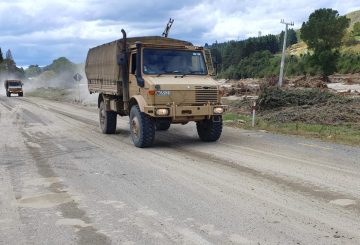거대한 지자기 폭풍으로 인해 뉴질랜드 마틴버러의 하늘이 오로라 불빛으로 밝아졌습니다.태양 반점의 물질이 지구 대기에 부딪혀 발생하는 이 폭풍은 수십 년 만에 가장 심한 폭풍 중 하나입니다.하지만 전문가들은 이번 사태가 극단적인 현상은 아니라고 말합니다.
전력망 담당 회사인 Transpower는 장비 보호에 대한 탄력성을 높였습니다.이 회사는 이전에 “전력망 긴급 통지”를 발표했지만 폭풍으로 인해 전력 공급이 중단될 것이라고는 예상하지 못했습니다.
폭풍은 지자기 폭풍의 NOAA SWPC 기준 최고 수준인 G5에 도달했습니다.이로 인해 이 폭풍은 10년 넘게 뉴질랜드에서 발생한 동종 폭풍 중 가장 큰 폭풍이지만 2003년이나 2001년에 발생한 폭풍만큼 크지는 않습니다.그럼에도 불구하고 북반구에서 수많은 멋진 오로라 전시가 열렸습니다.
오타고 대학교의 물리학 교수인 크레이그 로저 (Craig Rodger) 는 심각한 태양 폭풍이 뉴질랜드 전력망에 미치는 영향을 파악하기 위해 전기 업계와 협력해 왔습니다.그는 Transpower가 수천 암페어의 초과 전류를 유발할 수 있는 대규모 사태에 대비할 수 있도록 돕고 있습니다.
이번 폭풍의 영향은 앞으로 24시간 정도 지속될 것으로 예상되며, 토요일 오후에 최고조에 달해 적어도 일요일이 끝날 때까지 지속될 것으로 예상됩니다.





























































